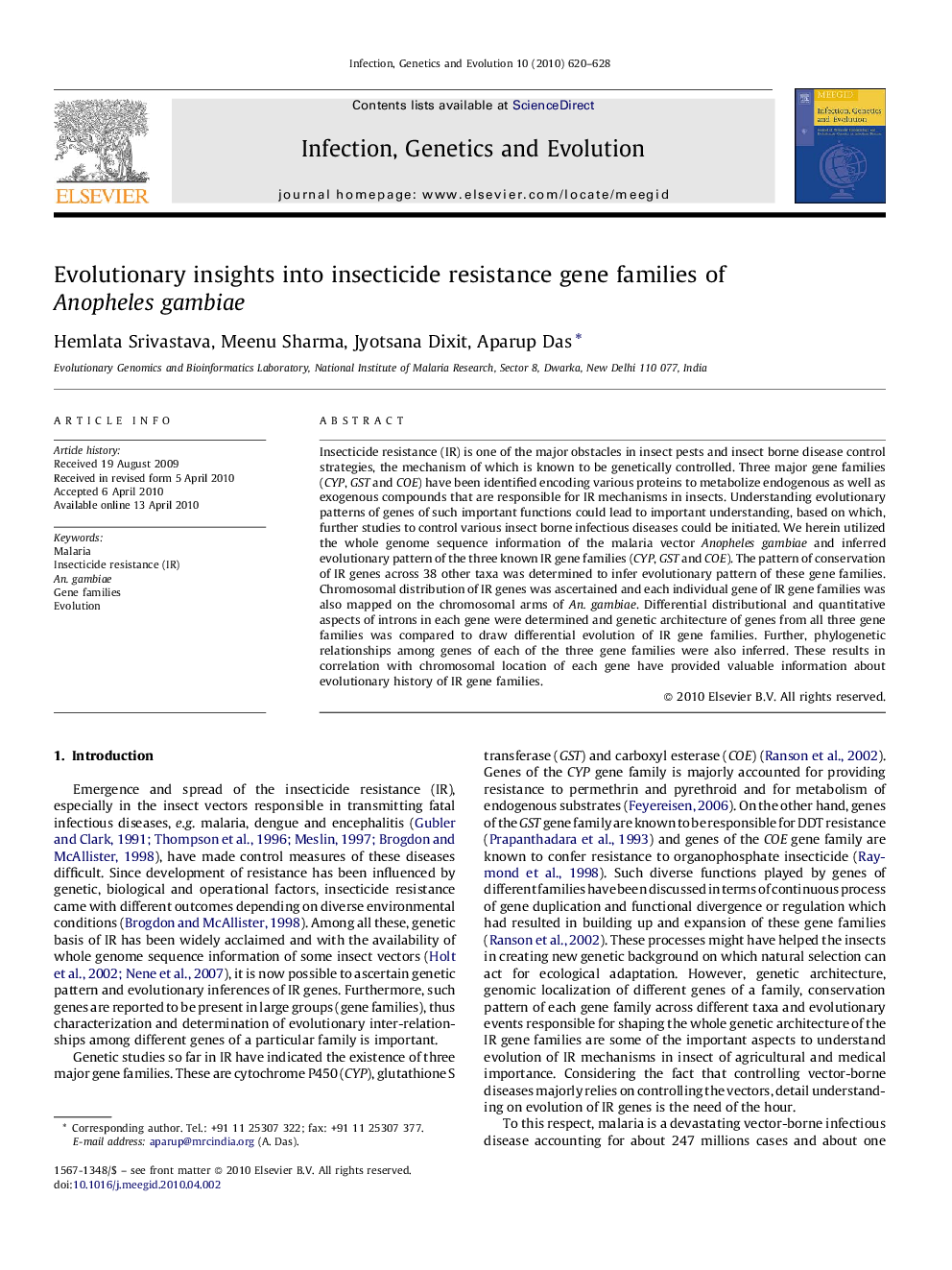| Article ID | Journal | Published Year | Pages | File Type |
|---|---|---|---|---|
| 2823251 | Infection, Genetics and Evolution | 2010 | 9 Pages |
Insecticide resistance (IR) is one of the major obstacles in insect pests and insect borne disease control strategies, the mechanism of which is known to be genetically controlled. Three major gene families (CYP, GST and COE) have been identified encoding various proteins to metabolize endogenous as well as exogenous compounds that are responsible for IR mechanisms in insects. Understanding evolutionary patterns of genes of such important functions could lead to important understanding, based on which, further studies to control various insect borne infectious diseases could be initiated. We herein utilized the whole genome sequence information of the malaria vector Anopheles gambiae and inferred evolutionary pattern of the three known IR gene families (CYP, GST and COE). The pattern of conservation of IR genes across 38 other taxa was determined to infer evolutionary pattern of these gene families. Chromosomal distribution of IR genes was ascertained and each individual gene of IR gene families was also mapped on the chromosomal arms of An. gambiae. Differential distributional and quantitative aspects of introns in each gene were determined and genetic architecture of genes from all three gene families was compared to draw differential evolution of IR gene families. Further, phylogenetic relationships among genes of each of the three gene families were also inferred. These results in correlation with chromosomal location of each gene have provided valuable information about evolutionary history of IR gene families.
